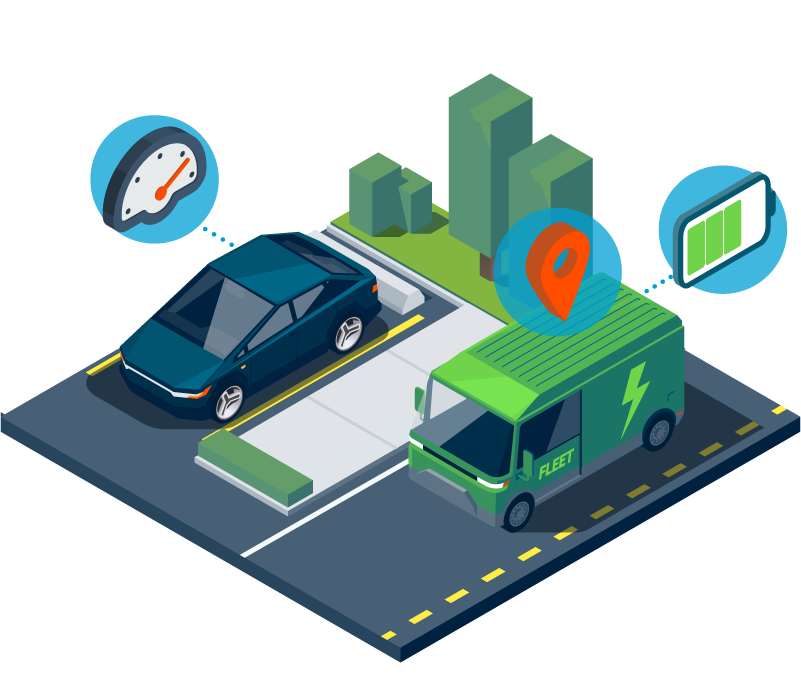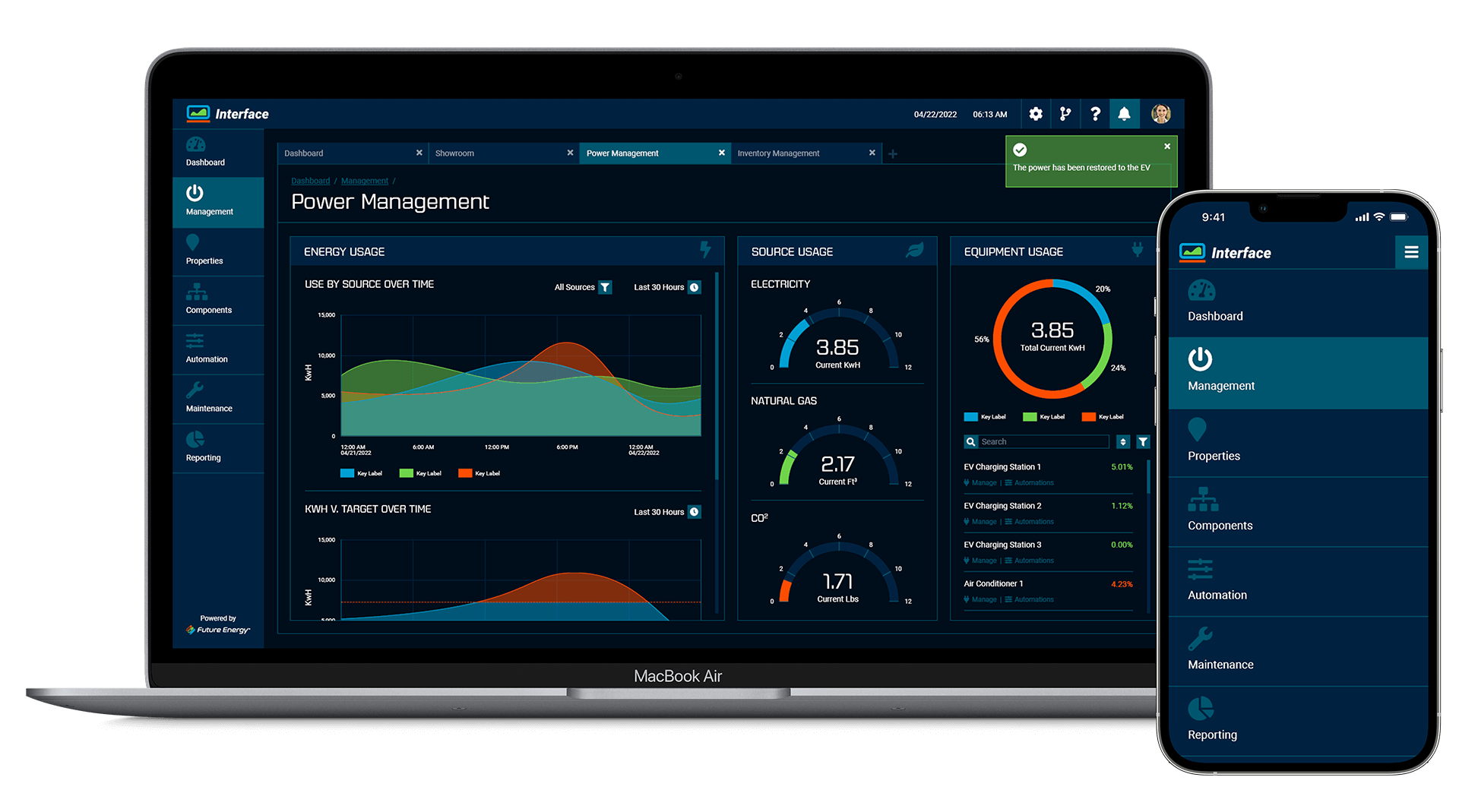Calculating Port Count Needs
Guests who drive electric vehicles (EVs) will arrive at your hotel wanting to charge. To do so they will need you to accurately asses your port count needs. Increasingly, guests expect EV charging as a perk, similar to wireless internet.
Additionally, EV charging can generate additional revenue or act as a perk for guest loyalty programs.

The development of a strategy for EV charging within your business operations is a critical first step. After you determine your goals, you can work backward to figure out technology needs.
The choice of electric vehicle supply equipment (EVSE) is a complex process that includes a number of factors that tie into your unique use case. The EVSE you select involves, in part, calculating port count needs to meet the expectations of guests.
Understanding EV Charging Basics
Similar to a gas pump, an EV charger can serve multiple drivers at once. Each piece of equipment can have two or more ports.

What Exactly Is an EVSE Port?
Imagine two drivers charging from opposite sides of a gas pump. It’s a similar situation with an EV charger. However, like a gas pump, only one car at a time can charge using a particular “spout” or port.
What Does Fast Charger Mean?
There are three types of EV chargers, defined by the rate at which they charge the EV battery.
- Level 3 chargers are also known as direct-current fast chargers (DCFC). They run off 480-volt three-phase power. The conversion from the grid’s alternating current (AC) to direct current occurs within the charging unit. As a result, level 3 chargers are more expensive but can fully charge an EV in about a half hour.
- Level 2 is the most common EV charger in use today. They use 240-volt power, similar to a large household appliance, and are appropriate for home and commercial use. A commercial level 2 charger replenishes an EV battery at about 40 miles per hour.
- Level 1: Level 1 chargers use 120-volt power and charge at about five miles per hour. They are appropriate for home—not enterprise—use.
How Much Do EV Chargers Cost?
The cost of an EV charger is a complex question that depends on a number of factors. These factors include the type of EVSE, the number of ports, and the need to upgrade electrical infrastructure.
There is money available at the local, state, and federal levels to offset the cost of EV charger installation. Future Energy helps our clients to identify 99% of all available funds through our proprietary Financial Incentive National Database (FIND) tool. Many incentives require companies to meet specific parameters, many of which involve port count.
Meeting Financial Incentive Program Requirements
One of the first questions in calculating port count needs is what you “could”—not necessarily “should”—do as a business? You could, for instance, build your entire strategy around meeting financial incentive program requirements.

Recognizing Federal Requirements
In February 2023, the federal government established the requirements for its National Electric Vehicle Infrastructure (NEVI) program. NEVI has allocated $7.5 billion for EV charging projects.
To qualify for the funds, locations must:
- Be within one mile of established alternative fuel corridors
- Accommodate power requirements for direct-current charging
- Charge four vehicles simultaneously at 150 kW
Determining the Importance of Qualification for Funds
Qualification for NEVI and many other types of funding generally requires the installation of at least one level 3 charger. Therefore, it’s important to determine whether you wish to qualify for funding before deciding upon equipment.
Obtaining Money to Offset EV Charging Project Cost
A level 3 charger may not exactly fit your particular use case. But it could make sense to install level 3 infrastructure to qualify for funding to offset your project’s costs.
Enhancing the Guest Experience
The next round of questions involves determining the guest experience you hope to provide. To address everything that your guests may need or expect, Future Energy offers a complete EV charging environment called ChargeParcTM.

Enhancing Your Brand
You have a chance to position yourself at the forefront of the transformation in transportation. Hotels that offer EV charging can enhance their reputation and attract guests who are looking for a place to charge overnight as they travel.
Additionally, Future Energy provides opportunities to include your name, logo, and other branding directly on the EVSE, bollards, signs, and parking spots within ChargeParc.
Providing Worry-Free Charging for Overnight Guests
Guests will expect to have their EVs fully charged upon their departure from the hotel. Calculating port count needs involves strategizing how many vehicles you wish to be able to charge at once so that you can adequately accommodate your guests.
You can integrate your parking options with EV charging. Guests will expect a well-lit location with security monitoring so that they can charge safely.
Including EV Charging in the Valet Experience
You also may choose to incorporate EV charging into your valet service. Your valets can rotate EVs on the chargers, removing vehicles once they are done with their charging session and hooking up the next guest’s EV.
Understanding How Hotel Capacity Affects EV Charging
A major piece of calculating port count needs is, of course, the number of guests you are expecting will use the EV chargers.

Average Occupancy
How many overnight guests do you get? How does the volume change by season, by month, or by day of the week? It’s important to plan for maximum capacity and estimate the percentage of guests you anticipate will need to charge. And while maximum occupancy is less likely to change over time, the percentage of EV drivers is on the rise.
Consumer Research Data
To help our clients address their current and future needs, Future Energy uncovers all applicable data relating to EV adoption by state and nationwide. For example, 25% of vehicles sold in California in the second quarter were electric, the highest level of EV adoption in the US.
Another piece of the puzzle involves population density. The rate of EV adoption in rural areas of the US is 40% less than it is in urban areas. Hotels located in rural areas need to factor this consideration into calculating port count.
Additional Power Requirements
Future Energy provides our clients with a customized EV impact study that factors in all the considerations you need when calculating port count needs. Once we approximate the number of port counts, we help to calculate your power requirements. We consider:
- Electrical panel: How much added capacity will you require in terms of amps for all of your EV chargers
- Transformer: How much additional load will pass through in terms of simultaneous kilowatt usage from all installed chargers
- Energy: How much extra energy you will use per month in terms of kilowatt hours, and how this translates to cost
Finding Help in Calculating Port Count Needs
Future Energy works with your hotel to build a strategy that considers all the factors you need to calculate your port count needs. Contact Future Energy today to get started so that your hotel enterprise is at the forefront in responding to the needs of drivers who are traveling by EV.

